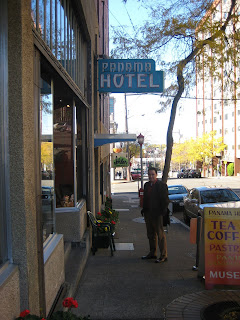STATUS: I’m having a very interesting cover discussion tomorrow. And I’m sharing a fairly hilarious cover discussion in my February newsletter so be on the look out for it.
What’s playing on the iPod right now? CHANGE by Tears For Fears
I actually should not be tackling this subject because for the most part, I don’t read or use synopses.
I know. Shocking. It’s the complete opposite of what you hear. I’m just the maverick in that department.
When I go out on submission with a project, I have my cover letter (many of which I’ve shared with my blog readers) and the full manuscript. That’s it.
If I’m selling something that’s a first in a series or trilogy, I’ll also include a one-page (2 tops) teaser blurb regarding the subsequent possible books.
The reason why? For the most part, from what I can tell, I’ve got many a client who can write one hell of a novel but suck at writing a synopsis. Seriously, it’s almost physically painful to wade through them. I end up asking more questions than the synopsis answered!
But sometimes you can’t escape it and we have to do it. When that happens, here are the tips that I tell my clients so they can write a half-decent synopsis.
1. As you begin, pretend that the reader of the synopsis has not read any prior books in said series so your opening paragraph or paragraphs, sums up the previous novel and explains the world (if that’s pertinent). It creates a base in which to build the rest. Often, even the editor won’t remember every character or background tidbit in a novel that they edited! Not to mention, when selling on synop, the editor may be sharing your explanation with folks who have, indeed, not read your work yet.
It helps to orient the reader in this way and if done right (and succinctly).it can go a long way to making a synopsis strong.
2. Outline your character or characters’ internal conflict.
3. Briefly outline your external conflict and plot points.
4. Once that is clear in your head (and on paper), then you have to decide how is the best way to convey both plot and theme in the synop. My suggestion? Start with plot first. Get that down in a clear, concise manner. This is what will happen in the novel. Once the plot path is clear, then go back and interweave why the heck the events unfolding are important to the story (which is theme.)
5. Now hand this off to a person who knows nothing about your work and see if they can follow the synopsis. If that person can’t, you know you’ve missed and you have some real work in front of you.
The real problem with writing the synopsis is that the story is so clear in the author’s head, they mistakenly assume that it’s clear on the page as well. After all, it makes perfect sense to them.
And when even that fails, just start writing. As long as we have sample chapters on hand, I can squeak by with a very short, one-pager synop that’s more teaser than it is full outline.
And it goes without saying that if you are a new or a debut writer, you must have a full manuscript. Still, even with that in hand, lots of agents request the synop so you might as well get as good as possible at it. I know that at conferences, they often host hour long sessions on how to write a decent one. Time well spent most likely.


+jpg.jpg)










